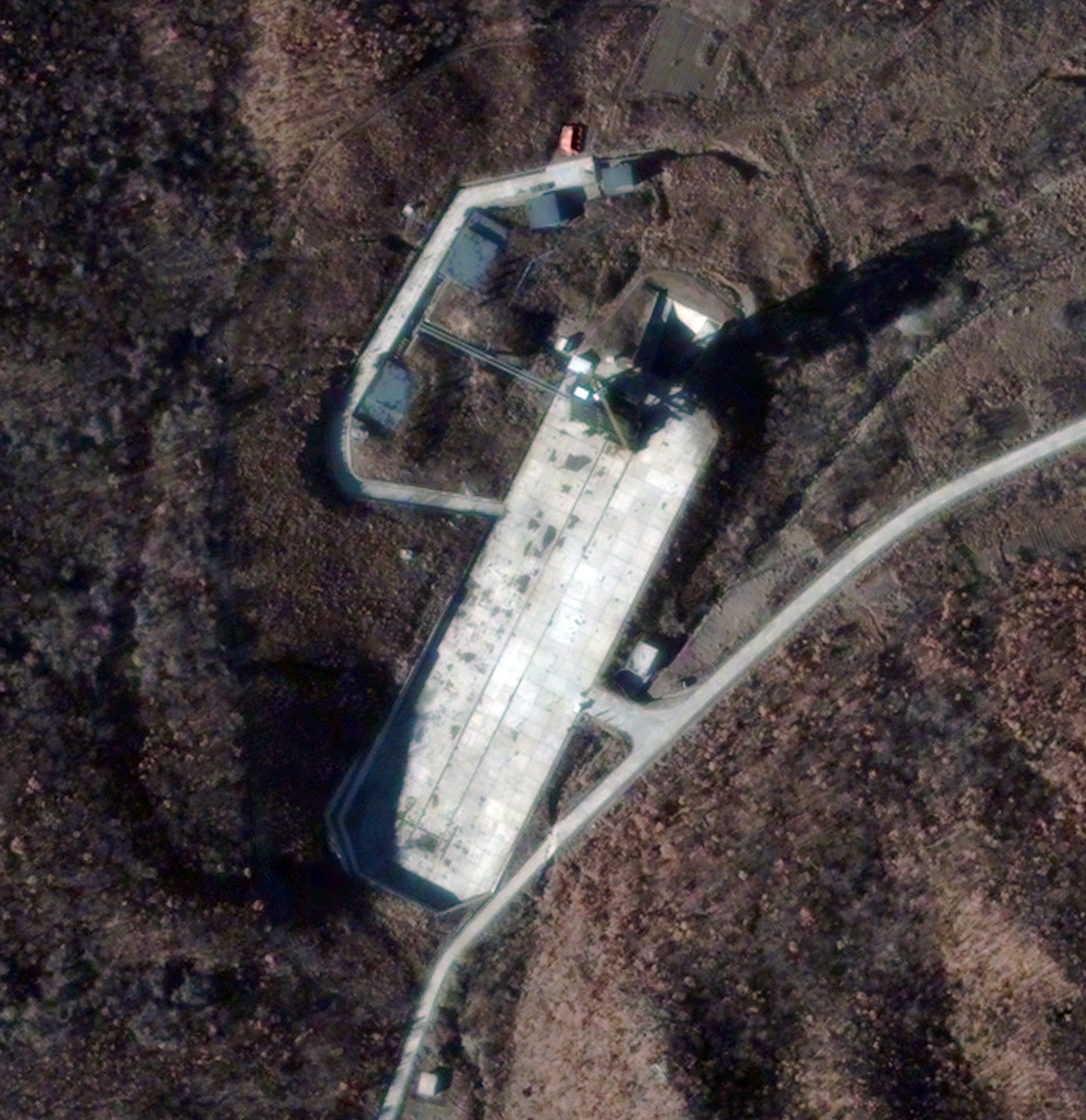North Korean Satellite Said to Be Tumbling in Orbit

North Korean satellite launched Saturday may be tumbling in orbit and inoperable.
While the U.S. Defense Department has made no public comment on the status of the Kwangmyongsong-4 satellite launched by North Korea, a senior defense official said it appeared that the satellite was tumbling in orbit, and thus not able to carry out its Earth observation mission.
The official didn't provide any additional details on the satellite's condition, and North Korean officials continue to declare the launch a success. [CNN]
More News
A Delta 4 rocket is set to launch early tomorrow carrying a classified payload. The Delta 4 is scheduled to lift off from Vandenberg Air Force Base in California at 6:39 a.m. Eastern, with a 100 percent chance of acceptable weather. The Delta 4 is carrying a payload for the National Reconnaissance Office on a mission designated NROL-45. The NRO has not released additional details about the mission, but satellite watchers believe the payload is a Topaz radar imaging satellite. [Spaceflight Now]
The Obama Administration will roll out its fiscal year 2017 budget request today. The White House will release the overall budget late this morning, with agencies to follow up with additional details later today. For NASA, that includes a "State of NASA" speech by Charles Bolden at the Langley Research Center this afternoon. NASA received nearly $19.3 billion in fiscal year 2016, three-quarters of a billion dollars more than the original request. [My News 13 Orlando]
Scientists announced plans for press conferences Thursday that may announce the discovery of gravitational waves. Scientific collaborations that use the Laser Interferometer Gravitational-Wave Observatory (LIGO), as well as the National Science Foundation, announced plans for press conferences in Washington, D.C., and several other locations Thursday morning to report on the status of the search for gravitational waves. The planned announcement, coupled with other rumors, suggest scientists will announce the discovery of gravitational waves in the cosmos, a phenomenon predicted by Einstein's theory of general relativity but not yet observed. [GeekWire]
Want to get these briefings even earlier? Here's the signup.
Breaking space news, the latest updates on rocket launches, skywatching events and more!
Spaceport America is expected to get only a fraction of the state funding it requested for this year. A funding bill in the New Mexico Legislature would provide the spaceport with $1 million for operations, compared to a request of $2.8 million. The spaceport hasn't discussed how it will make ends meet if the lower funding level is sustained in the final version of the bill, but spaceport supporters argue it would make "absolutely no sense" to close or sell the facility given the state investment in the spaceport. [Las Cruces (N.M.) Sun-News]
NASA offered a first look at some of the hardware being built for its next Mars rover. The hardware is part of the landing system for the Mars 2020 mission, similar to the Curiosity rover that landed on Mars in 2012. The 2020 mission will collect Mars rock and soil samples for return to Earth on a later mission. [CBS]
An organization that says it represents a group of NASA employees is threatening to sue the agency on grounds of religious discrimination. The Liberty Institute says that a group of employees, members of a religious club at NASA's Johnson Space Center, were told by agency officials they could not mention "Jesus" in email announcements about the club's activities. The institute said it will file suit next month unless NASA drops the ban. A NASA spokeswoman said the agency doesn't prohibit the use of religious names in such newsletters. [The Hill]
A Mars One finalist is simulating a trip to Mars — by spending five days in a glass box in Australia. Josh Richards will stay in the box, a simulated habitat, located along Sydney Harbour in full view of passersby. He has various activities planned for the week, "including building a transmitter and undertaking an IQ test." The event is less a training exercise than a publicity stunt for the Australian DVD release of The Martian. [Mashable]
Eliminating the Competition
At a technology awards event in San Francisco Monday night called the Crunchies, SpaceX won the award for "Best Technology Achievement" for its Falcon 9 rocket. SpaceX beat out another Elon Musk-run company, Tesla and its autopilot technology, along with Apple's 3D Touch, Microsoft HoloLens, and a nuclear power startup called Transatomic Power. Besides the SpaceX-Tesla link, SpaceX had a connection with another finalist: A HoloLens virtual reality system was part of the cargo of a SpaceX Dragon mission to the ISS. That mission, though, was the one in June that was lost in a Falcon 9 failure. [TechCrunch]
This story was provided by Space News, dedicated to covering all aspects of the space industry.

Jeff Foust is a Senior Staff Writer at SpaceNews, a space industry news magazine and website, where he writes about space policy, commercial spaceflight and other aerospace industry topics. Jeff has a Ph.D. in planetary sciences from the Massachusetts Institute of Technology and earned a bachelor's degree in geophysics and planetary science from the California Institute of Technology. You can see Jeff's latest projects by following him on Twitter.

